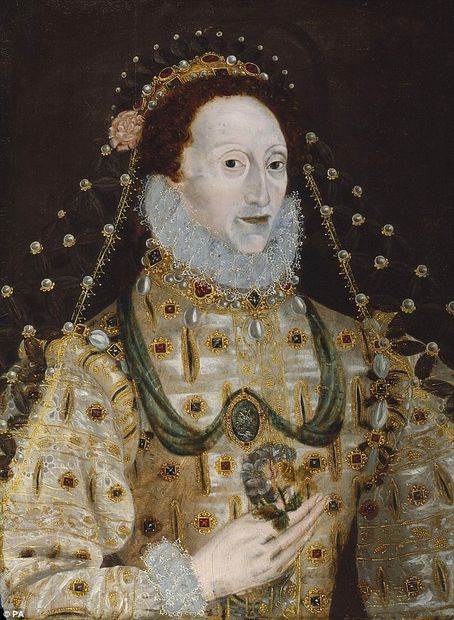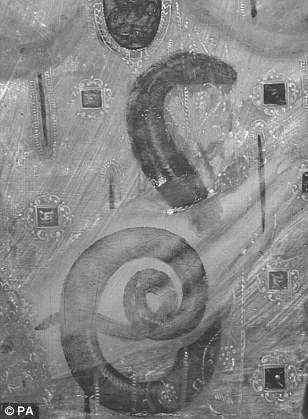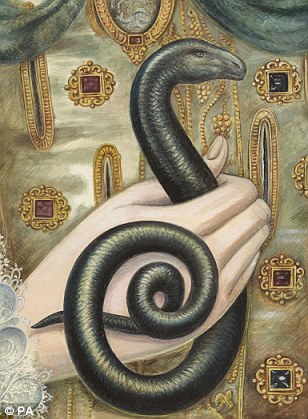
Which may explain why an artist carried out some serious alterations to his first draft portrait of Elizabeth I back in the 16th century.
Where he had drawn the Queen clutching a serpent, the painter had second thoughts and substituted a much more feminine bunch of roses.
The revisions would have remained a mystery had it not been for the ravages of time.
For yesterday, the National Portrait Gallery revealed how the image of the coiled snake had re-appeared.
Deterioration over the centuries has meant the serpent depicted in the Tudor monarch's fingers in the original version has revealed itself once more, with its outline now visible on the surface.
The portrait was created by an unknown artist in the 1580s or early 1590s.
The image has not been on display at the London gallery since 1921 but it will form part of an exhibition titled Concealed and Revealed: The Changing Faces of Elizabeth I, from March 13 to September 26.
A serpent was sometimes used to reflect wisdom, prudence and reasoned judgment, but the scaly creatures are also linked to notions of Satan and original sin.

The gallery suggested the snake's removal may have been due to the ambiguity of the emblem. An artist's impression has been created of what the snake could have looked like, with infra-red technology revealing the changes in the initial design.
A statement from the gallery said: 'The snake is mainly black but has greenish blue scales and was almost certainly painted from imagination.'
The image of the monarch covers a portrait of another woman, whose identity is unknown.
The gallery believes the unfinished portrait was by a different painter, showing how 16th century panels were sometimes recycled by artists.




Reading the works of David Icke, opened my mind up to the concepts of other races living amoungst us as our power elite. I believe that this could be proof. For the life of me, I have always wondered in what secret world do the muse for artist come from. How can a person who dont know me, never experienced what I am going through, yet can create a peice of work like a song, that could touch my soul, and make me feel that it was made just for me. How do they do it, I believe they are attuned to say the least.
My point is the artist is telling us something. Every detail in a work, has a meaning the artist, and I believe he was trying to tell us something. I watched Anciet Aliens not to long ago, they were doing a special on Da Vinci' and he had a painting that was painted out of two different types of paint and if viewed through a special lense, was a totally different picture. They say there is a meaning behind this. Maybe or maybe not, Im not sure, but I what I do believe, is artist have a ability to tap into universal truth or understanding that is outside themselves, to help reveal to others meanings and truths. Just ask yourself what I have learned over the course of my life through music, and does music affect my life? How can it change or even lend insight to a situation? Me being a manager of a few artist, I have watched them go in that zone, their in when they create, and Ive asked them where does it come from, and they just say the ideas just pop in their heads. I dont know.
www.eyecuonline.com.....a community for the enlightened,promoting love learning and communication, in a world of fear, ignorance, and divison to bring about a better tomorrow. Each one teach one...become a member. Knowledge is power, and its time for us to Power UP!